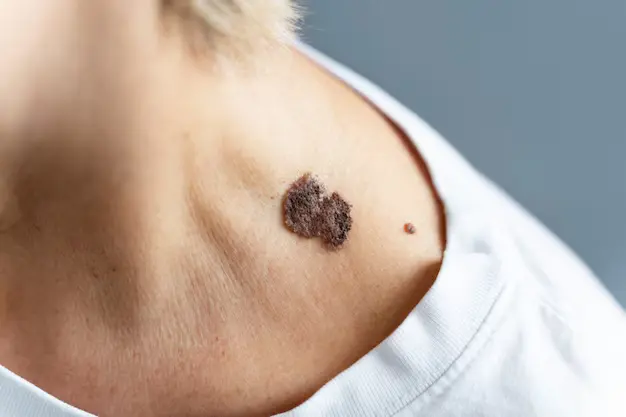- Home
- About
- Services
- Skin Programs
- Our Shop
- GalleryBefore/After ImagesVideo TestimonialsBefore/After ImagesVideo Testimonials
- Blog
- Contact Us
Moles Treatment from the Experts in the Science Of Skin

Moles, which appear as little pigment spots on our pores and skin, are not unusual and are mostly harmless. However, their appearance, wide range, and length can occasionally cause concern and, in rare cases, signify a health risk. The platform of Science Of Skin has advanced considerably and offers us a spectrum of means to remove moles. In this blog, we’ll delve into the technology behind moles and discover the current treatment to undergo, with a focus on maintaining stability between effectiveness and skin health.
Understanding moles
Moles, medically called nevi, are clusters of pigment cells known as melanocytes that give our pores and skin their colour. They can appear anywhere on the body, singly or in groups, and are commonly brown or black. While most moles are benign and pose no health risk, the changes in their appearance can occasionally indicate melanoma, a serious form of skin cancer.
It is essential to look for signs of any changes in size, colour, shape, or texture and consult a dermatologist for any changes.
A useful tool for evaluating moles is the ABCDE (Asymmetry, Border Irregularity, Color Change, Diameter, and Development) guide.
Treatment options for moles
The mole treatment is influenced by various characteristics, such as its size, location, and whether it is benign or potentially malignant. Here are the most common remedies:
Surgical excision
This conventional approach involves cutting out the mole and the surrounding border of the pores and skin. At Science Of Skin, we do a complete analysis, which is carried out by injecting local anaesthesia, and stitches are regularly required. The surgical excision process is usually recommended only for large moles or to test for cancer.
Shave excision
This procedure is suitable for big moles and involves numbing the area and then shaving the mole flush with the surface of the skin. It is much less invasive than surgical excision and would generally not require stitches, making it the preferred choice for many individuals.
Laser removal
Laser treatment can be effective for smaller, non-cancerous moles. It involves the use of strong laser lights to disrupt pigment cells. It demands time, but the method is much less invasive, with minimal pain and recovery time with the best laser treatment for moles and warts removal in Secunderabad.
Cryotherapy
Cryotherapy is a process that uses liquid nitrogen to freeze the mole, causing it to fall off over time. The process involves a minor cut that is often used for smaller, benign moles. Additionally, the remedy may remove a small blister, but it usually heals without scarring.
Electrosurgery
For the moles that are increasing in size, electrosurgery is probably the best choice. This technique uses an electric current to burn the mole. It is often used in conjunction with side-shave excision for complete removal.
Post-treatment care and monitoring
Regardless of the treatment technique, At Science Of Skin proper aftercare is important to ensure recovery and minimize scarring. This usually involves keeping the surroundings smooth, applying prescribed ointments, and avoiding direct sunlight. Keeping an eye out for any signs of trade in the location being addressed is also important, as it can help spot any capability issues in the early stages.
Choosing the right treatment
Deciding on the right option involves thinking about several factors, including the mole’s features, private health records, and beauty concerns and the best moles removal clinic in Hyderabad. A session with a dermatologist is key to evaluating the mole and discussing the most appropriate treatment options. The goal is usually to ensure the health and safety of the affected person while addressing their cosmetic desires.
